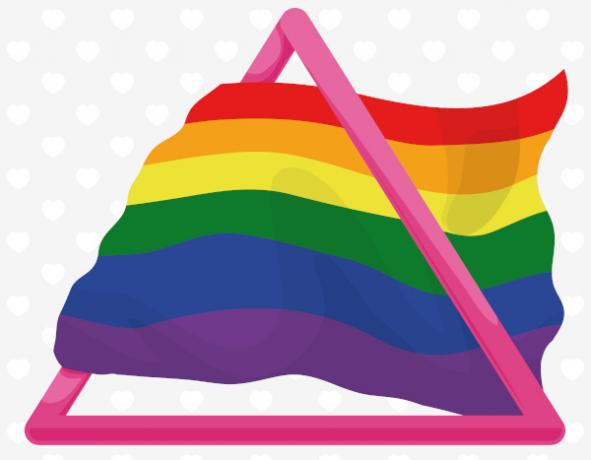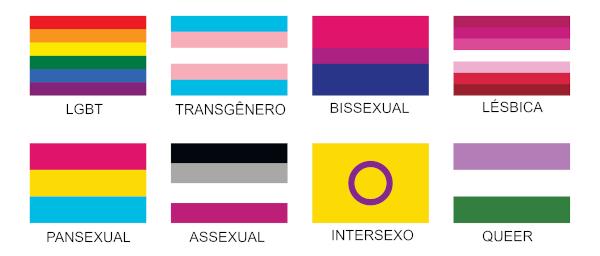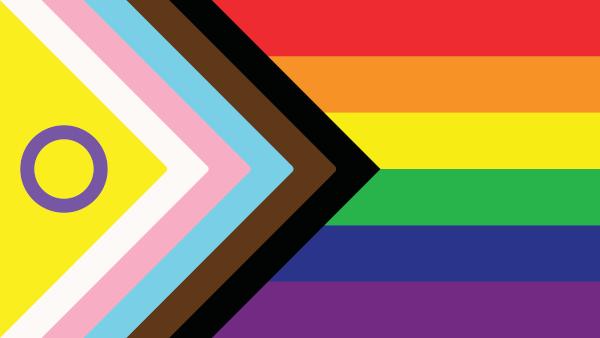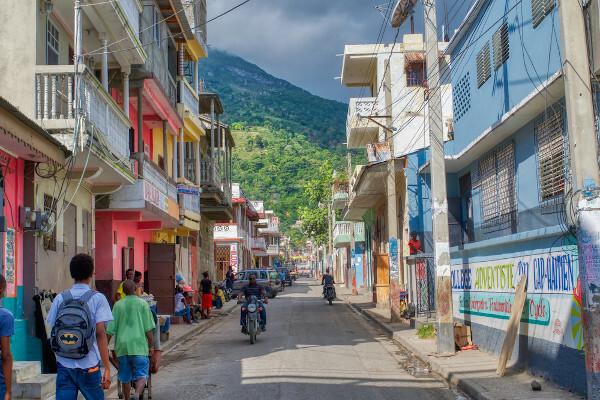A acronym LGBTQIA+ refers to lesbian, gay, bisexual, transgender, queer, intersex, asexual and other sexual orientations and gender identities.
Initially called GLS (gays, lesbians and sympathizers), the acronym was changing according to the changes that occurred in the guidelines and with the search for rights of the movement. For each of the letters, there is a historicity, and the fact that they are represented in the acronym indicates not only an identity, but also pride.
The rainbow flag came into use in the 1970s, but there are others, with variations in colors and symbols. The most recent change was the incorporation of the colors of the anti-racist struggle, the trans flag and intersex symbology.
Read too: What is queer?
Topics of this article
- 1 - Summary about LGBTQIA+
- 2 - What does LGBTQIA+ mean?
- 3 - Origin of the acronym LGBTQIA+
- 4 - Importance of the acronym LGBTQIA+
- 5 - LGBTQIA+ Symbols
- 6 - Flag LGBTQIA+
- 7 - New LGBTQIA+ flag
Abstract about LGBTQIA+
LGBTQIA+ means: lesbian, gay, bisexual, transgender, queer, intersex, asexual, with the “+” symbol covering other sexual and gender orientations, representing plurality.
The origin of the acronym is concomitant with the beginning of the movement for the rights of this population, which began in the 1960s, in the U.S.
It is important because, through recognition, it was possible, historically, to guarantee rights.
The LGBTQIA+ symbols are the rainbow flag and other flags of each identity.
The LGBTQIA+ flag was commissioned from a designer by the first openly gay congressman, San Francisco councilor Harvey Milk, to symbolize the movement.
The new LGBTQIA+ flag was launched in 2022 and incorporates the colors of the anti-racist struggle, the trans flag and intersex people.
What does LGBTQIA+ mean?

The acronym LGBTQIA+ stands for:
lesbians;
gays;
Bissexual;
trans (representing both transgenders and transvestites in Brazil);
whatueer;
iintersexuals;
Thessexuals;
other sexual orientations and gender identities.
Do not stop now... There's more after the publicity ;)
Origin of the acronym LGBTQIA+
The acronym has changed throughout the struggle history of the movements. The Stonewall Revolt, which took place in New York, is a consensus for the movement., USA, in 1968.
Stonewall Inn was the name of the bar/nightclub that accepted LGBTQIA+ people at the time. It was located in a bohemian neighborhood of the city and received, much more than other establishments, constant police inspections, many of which ended violently. This is because, in the USA, until 1962, homosexuality was typified in the penal code as a crime.
With the emblematic freedom movements of the 1960s, this law fell, but most places, for example, did not even sell alcoholic beverages to LGBTQIA+ people; still others would not let these people in. A local New York law regulates even clothing, thus not allowing two “pieces of the opposite sex” to be used. That is, there was a clear ban on trans people or even women wearing pants and a shirt, for example.
In this sense, Stonewall was, firstly, a milestone, for being the first bar to accept and openly declare itself aimed at this public. However, she suffered persecution.
Against such actions by the State through police action, several demonstrations were organized. A Europe was going through other uprisings of young students, such as the May 1968, in France, and the anti-racist and counterculture in the US itself. This climate of struggle infected an entire generation.
In one of the frequent police raids in Stonewall, a woman, a lesbian, outraged by her senseless arrest, shouted at people passing by and at the bar. Then, several passers-by joined the call and also started to protest. Several people were arrested, and many places were set on fire throughout the early hours of that day.
The bar reopened its doors the next day, despite everything that had happened. And so the days went by — with each repression, a reaction. LGBTQIA+ couples started to walk hand in hand in the streets, even though it was forbidden. If the police came, with truculence, they would respond in the same tone, throwing stones and sticks, the “weapons” they had.
In this context, two transvestites were fundamental: Marsha P. Johnson and Sylvia Rivera, the first to start the reactions, initially throwing glass cups at police cars. Marsha, a black, trans woman and prostitute, was one of the first and main organizers of the I Gay Parade (as it was called at the time) of the world, which took place on the outskirts of Stonewall, on June 28, 1968, bringing together thousands of people.
From then on, organized movements emerged, such as the Gay Liberation Front, in the USA. Currently, every year, in thousands of cities around the world, parades take place, and the June 28 was established as LGBTQIA+ Pride Day.
Read too: Black movement — the struggle for social equality and rights for the black population
Importance of the acronym LGBTQIA+
Although we know that homosexual practices existed since at least the Ancient Greece in world history — and, in many civilizations, to be taken for granted and even rites of passage|1| —, there was also a lot of repression over the centuries. Famous and outstanding examples are that of the writer oscar wilde, for example, author of The portrait of Dorian Gray, one of the greatest works of world literature, who was sentenced to hard labor for being gay in England at the beginning of the 20th century. Or the case of the inventor of the computer, Alan Turing, who left us this enormous legacy, but was chemically castrated while still alive, also in England, in the 1960s.
In addition, political exception regimes persecuted LGBTQIA+ people. During the Nazism, in Germany, these people were given triangles that were sewn onto their uniforms in concentration camps or placed on the doorsteps of their homes before being captured. To gay men, pink triangles; to lesbian women — called “antisocial women” — black inverted triangles.
At Brazilian Civil-Military Dictatorship, there were death squads for transvestites, who pursued them in the streets, in hygienist processes that also tried to “sweep away” homeless people, most of them black. In the same year of 1968, while Stonewall was happening in the USA and May 1968 in France, in Brazil, the Queen of England Elizabeth II was passing through. In order for the streets of São Paulo to appear clean in the eyes of the monarch, a large operation was set up, with police patrols every night, commanded by police chief José Wilson Richetti, who arrested, beat, tortured and even killed these populations.|2|
The importance of the LGBTQIA+ movement is due to these and many other cases of violence suffered by a huge portion of the population over time. It was to fight against such abuses that the movements emerged. But not just reactively. Today, we see actions that guarantee rights such as same-sex marriage, social name recognition, adoption authorization for same-sex couples, among others. Despite this, in some countries it is still a crime to be an LGBTQIA+ person. And even in places where some advances have already been achieved, there are lines of Medicine and Psychology that still face the homosexuality and transgenderism as a disease, even if they have left the manuals of the International Classification of Diseases (CID) for years.|3|
LGBTQIA+ Symbols

There are, nowadays, a multitude of symbols that have been adopted by the LGBTQIA+ movement over time. The best known are the flag with the rainbow and the pink triangle. (which refers to the Nazi persecution, already discussed in this article).
The triangle was re-signified and went from a landmark of pain and extreme violence to an element of identity that recalls the memory of those who are gone simply for existing.
Slowly, each of the sexual orientations and gender identities was also creating its flag with different colors, as is the case with the flag of trans people. This is the part of the LGBTQIA+ population that suffers the most violence, to the point where the life expectancy of a transvestite in Brazil is only 35 years |4|. Its flag was designed by Monica Helms in 1999 in blue, pink and white. There is also the bi flag, one of the most invisible among the others of the acronym, in pink, purple and blue, designed by Michael Page, in 1998. Lesbians, on the other hand, have never adopted a flag, but use some specific symbols, such as the black triangle or the double Venus.

LGBTQIA+ flag
The LGBTQIA+ flag, which combines all colors as a meaning of inclusion, was designed by designer Gilbert Baker and presented to the public in June 1978, ten years after Stonewall, during one of the LGBTQIA+ Pride Parades, when these were already consolidated in the USA.
![People hold a giant flag with the colors of the rainbow and a symbol of the LGBTQIA+ community on Avenida Paulista, in São Paulo. [1]](/f/cff25416348891a946d065aeab94925d.jpg)
It was commissioned by the first openly gay politician in that country, Harvey Milk, supervisor (like a councilor, in Brazil) of the city of São Paulo. Francisco who, guiding LGBTQIA+ rights in the Chamber and seeing that the movement was growing more and more, felt that it would be necessary to symbol.
O Initial design had the following colors and meanings:
Pink: sexuality.
Red: life.
Orange: healing.
Yellow: sunlight.
Green: nature.
Turquoise: magic/art.
Indigo: harmony/serenity.
Violet: human spirit.
According to the artist and creator, each of these colors represented a different aspect of humanity.
During the HIV/aids, in the 1980s and early 1990s, which acutely affected the LGBTQIA+ population, especially trans and gay men, the flag was even put in black, symbolizing the mourning for so many lives lost and the alert regarding the health of this population. Afterwards, it was withdrawn.
New LGBTQIA+ flag
Just like the acronym, the debates, the agendas and the LGBTQIA+ struggles, the flag often undergoes new discussions. Released on December 6, 2022, the current flag includes the figure of intersex pride, the colors of the trans flag, as well as the anti-racist struggle.

There is an understanding that, due to the fact that black and LGBTQIA+ people go through similar situations of prejudice, the anti-LGBTQIA+phobia struggle cannot be detached from the anti-racist struggle.
Launched in Brazil at Parada do Rio de Janeiro, The new version began to be designed by designer Daniel Quasar, in 2018, with the inclusion of racial and trans issues, and took its final form with designer Valentino Vecchietti, who added intersex symbology.
Grades
|1| ANDRADE, T. S. M. The homoerotic relationship in Ancient Greece. Faces of History, vol. 4, no. 2, p. 58-72, 3 Jan. 2018. Available here. Accessed on: December 28, 2022.
|2| Report of the Truth Commission of the State of São Paulo, Volume I, Part II. Available here. Accessed on: December 28, 2022.
|3| WHO removes transsexuality from the list of mental illnesses. Report by the newspaper El País on June 18. 2018. Available here. Accessed on: December 28, 2022.
|4| Dossier: Murders and Violence Against Brazilian Transvestites and Transsexuals. Available here. Accessed on: December 28, 2022.
image credits
[1] Nelson Antoine / Shutterstock
By Mariana de Oliveira Lopes Barbosa
History teacher
Read this text and learn what cisgender and transgender mean. Learn more about the difference between transvestites and transsexuals, binary and non-binary, gender identity and sexual orientation. Find out which is the correct pronoun for each LGBTI individual: he or she. Find out what is PablloVittar's gender identity.
Understand the origins and trajectory of feminism in Brazil, a movement that was consolidated in the fight for equal conditions between men and women.
Click here and find out who Judith Butler is. Get to know his main works, find out what his theories are and read some of his sentences.
Click here to find out what a social minority is, an important concept for contemporary sociology that tries to understand the exclusion of social sectors.
Click here to find out about the black movement, the historical origins of this set of movements, their achievements and their demands.
Click to understand what racism is, what Brazilian laws do to prevent crimes of racial prejudice from happening and a little bit of the history of the fight against this practice.
Understand a little more about racial segregation based on three historical examples: USA, South Africa and Brazil. Know the consequences of this practice.
Understand the concept of xenophobia, as well as the origin and meaning of this word. Also check out real examples of xenophobic practices in different parts of the world!


![At [@]: what is it and what does it mean?](/f/3986128ace7e429c731c53647e39cc4a.jpg?width=680&height=460)